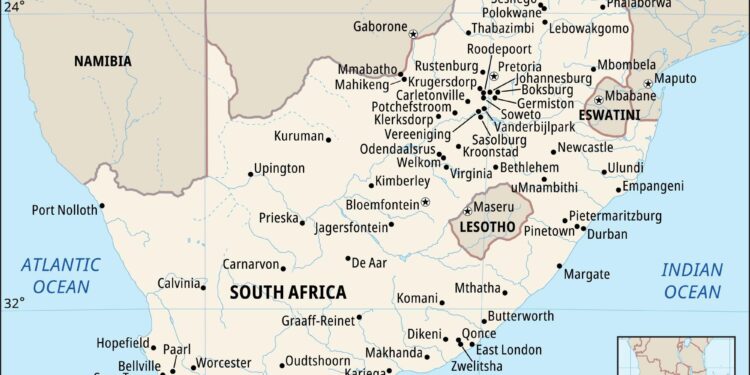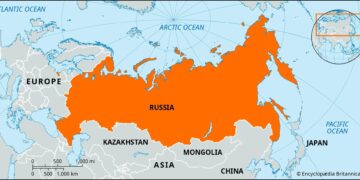Did White South Africans Seeking Asylum in the US Present a Distorted Reality?
In recent years, a contentious story has gained international attention involving white South Africans who have applied for asylum in the United States. These individuals claim they are escaping targeted racial violence and systemic persecution within post-apartheid South Africa. Their accounts have sparked intense debate about race relations, migration motives, and the broader socio-political landscape of their home country. This article explores these asylum claims critically, assessing their validity and considering how such narratives influence both South African society and U.S. immigration policies. Ultimately, it questions whether these applicants represent genuine victims or if their stories oversimplify complex realities to gain sympathy abroad.
Unpacking White South African Asylum Claims and Their Influence on U.S. Immigration Policy
The surge in asylum applications from white South Africans has prompted scrutiny over the underlying reasons driving this migration trend. Many applicants cite fears of violent crime—including attacks on farms—and assert that government initiatives disproportionately disadvantage white citizens economically and socially. These narratives often emphasize threats such as land expropriation without compensation as evidence of systemic targeting.
However, critics argue that some claims may be overstated or strategically framed to align with Western perceptions of victimhood, thereby increasing chances for asylum approval under U.S. law—which traditionally prioritizes persecution based on race or political opinion.
Key aspects fueling this debate include:
- Reports of violent incidents affecting rural communities, including farm attacks.
- Allegations that state policies marginalize whites through economic reforms.
- The political context where some frame their emigration as fleeing post-colonial retribution.
These assertions challenge conventional definitions of refugee status within American immigration frameworks—prompting lawmakers to reconsider criteria for granting protection based on nuanced socio-political factors rather than broad generalizations.
Recent data illustrates an upward trajectory in applications from this group:
| Year | Applications Filed | Approval Percentage |
|---|---|---|
| 2020 | 250 | 30% |
| 2021 | 500 | 25% |
| 2022 | 700+ | 28% |
This growing trend underscores the need for careful evaluation by immigration authorities to distinguish between legitimate cases and those potentially influenced by politicized narratives.
Media Influence on Global Views Regarding Land Reform in South Africa
The portrayal of land reform efforts in South Africa by international media outlets significantly shapes public understanding—often simplifying a deeply intricate issue into a binary conflict centered around white farmers’ experiences versus government policy changes.
For example, coverage highlighting “white farmers as refugees” tends to evoke strong emotional responses aligned with Western ideals about property rights and victimization but frequently omits critical historical context: centuries-long dispossession suffered predominantly by Black South Africans under colonialism and apartheid regimes.
This selective framing can lead to several problematic outcomes:
- Crisis Framing: Media often depict land redistribution as chaotic upheaval threatening national stability—discouraging foreign investment crucial for economic growth.
- Stereotypical Symbolism:The image of displaced white farmers resonates internationally but risks overshadowing broader social justice goals.
- Lack Of Diverse Voices:Black communities’ perspectives regarding restitution remain underreported despite being central stakeholders affected by land inequities.
< /ul >Such imbalanced reporting perpetuates division rather than fostering informed dialogue necessary for reconciliation efforts underway within the country’s evolving democracy.
Combating Misinformation Through Ethical Journalistic Practices: A Path Forward
In today’s fast-paced information environment, journalists bear significant responsibility when covering sensitive topics like racial tensions and migration claims from contested regions such as South Africa.
To ensure accuracy while minimizing bias or misinformation dissemination, media professionals should adopt comprehensive strategies including:
- < strong >Source Verification:< / strong > Rigorously assess credibility through cross-checking multiple independent sources before publication.< / li >
- < strong >Contextual Reporting:< / strong > Situate individual stories within larger historical-political frameworks avoiding sensationalism.< / li >
- < strong >Expert Collaboration:< / strong > Engage academics specializing in sociology,migration studies,and African historyto provide balanced insights.< / li >
< / ul >Transparency is equally vital; openly sharing research methods alongside acknowledging limitations builds audience trust while encouraging critical consumption among readers/viewers alike .
Additional measures could involve :
- < strong >Prompt Corrections: Establish clear protocolsfor swiftly addressing inaccuracies once identified .< / li >
- < strong >Interactive Platforms :< / strong > Utilize social mediaand forums enabling public engagement ,questions ,and feedback .< / li >
- < strong >Media Literacy Campaigns :< / strong > Educate audienceson distinguishing factual contentfrom misleading information .< /li />
Conclusion: Navigating Complex Intersections Between Race Relations,Migratory Movements,and Media Narratives
The discourse surrounding white South Africans seeking refuge abroad encapsulates multifaceted challenges tied not onlyto domestic inequalitiesbut also global perceptions shapedby storytelling choices .
While concerns about safety,racial inequality,and economic disenfranchisement are valid componentsofSouthAfrica’s ongoing transformation,the depictionofa mass exodus driven solelybyracial persecutionwarrants cautious examination .
Unchecked propagationof simplifiedor politicized versions risks deepening societal riftsand misinforming policy decisionsboth locallyandinternationally .
As developments unfold,it remains imperativeformedia outlets,policymakers,andcivil societytoremain vigilantagainst distortion ,prioritizing nuancedunderstanding groundedin factsand empathy .
Onlythroughsuch balanced approachescan constructive conversations emergethathonorthecomplex histories involvedwhile chartinga pathtowardinclusive futures .















